

Max Davies
2026 GWM Haval Jolion review
4 Hours Ago
Two sporty-design, fuel-efficiency focused crossovers from Japan face off in a showdown. Do either make a case?

Senior Contributor
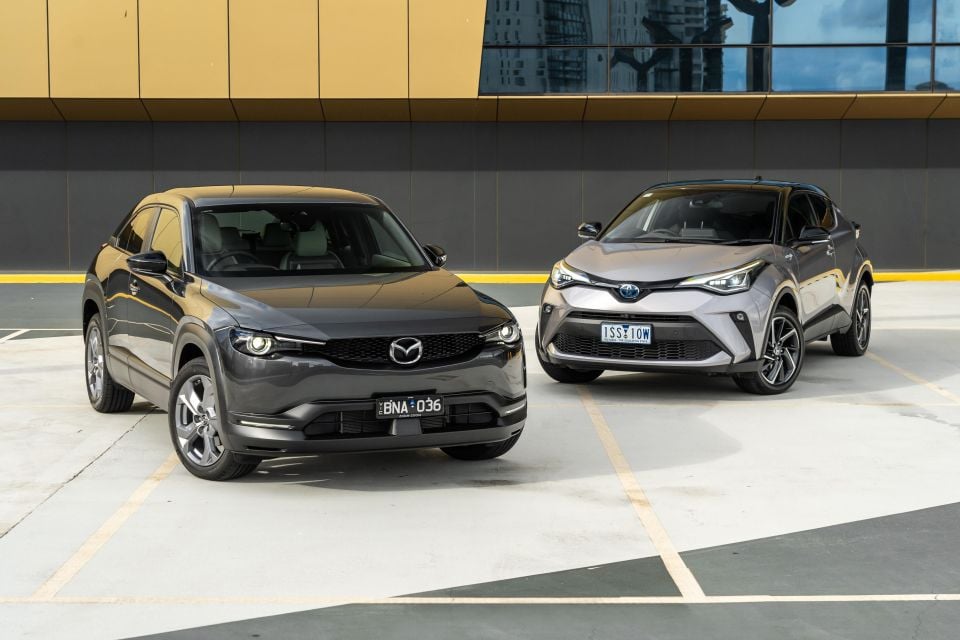

Senior Contributor
The Mazda MX-30 and Toyota C-HR have a lot in common within the wider small SUV competitor set.
Both pair sporty designs – small windows, novel doors, sloping rooflines – combined with a moderately elevated seating position.
Both are marketed as environmentally-friendly hybrids, though as we will discuss only the Toyota fully earns this moniker.

Neither really places a priority on interior space and practicality – both manufacturers offer their own roomier SUV alternatives for similar money.
Each comes from Japan, if country of origin is an important consideration, and they’re almost identical dimensionally.
All of which lays the ground work for this head-to-head between two close rivals. Which, if either, makes the most sense?
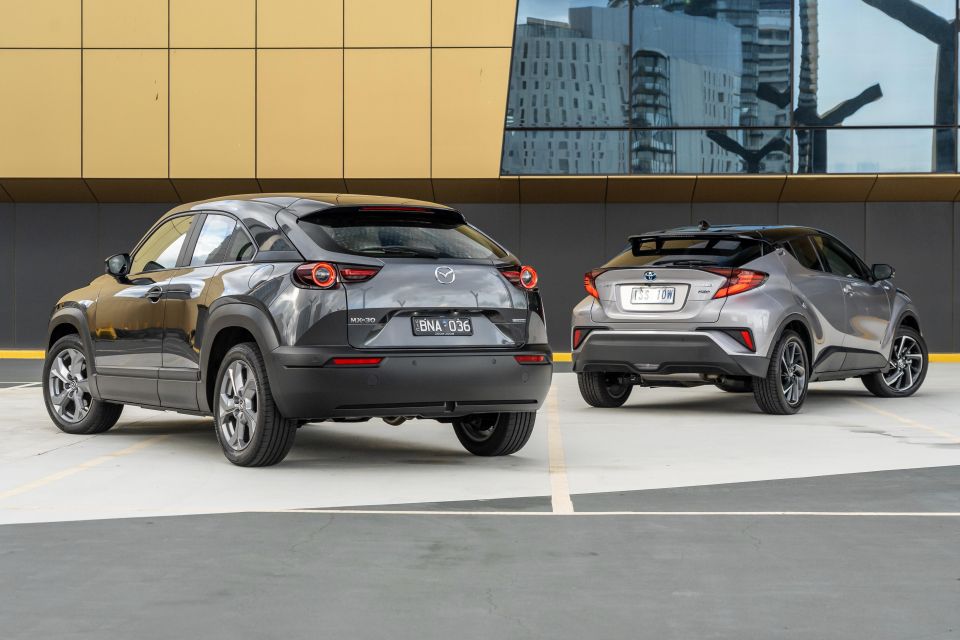
The Mazda MX-30 G20e comes in three specification levels: the Evolve at $33,990, Touring at $36,490, and Astina at $40,990.
The Toyota C-HR is available in three spec grades called GXL, Koba and GR Sport. But only the latter pair, which offer more luxury features and a sportier design respectively, come with the hybrid powertrain. Both cost $37,665.
All figures listed here are manufacturer list prices, before on-road costs which should equal around $4000 (with some variance by State).
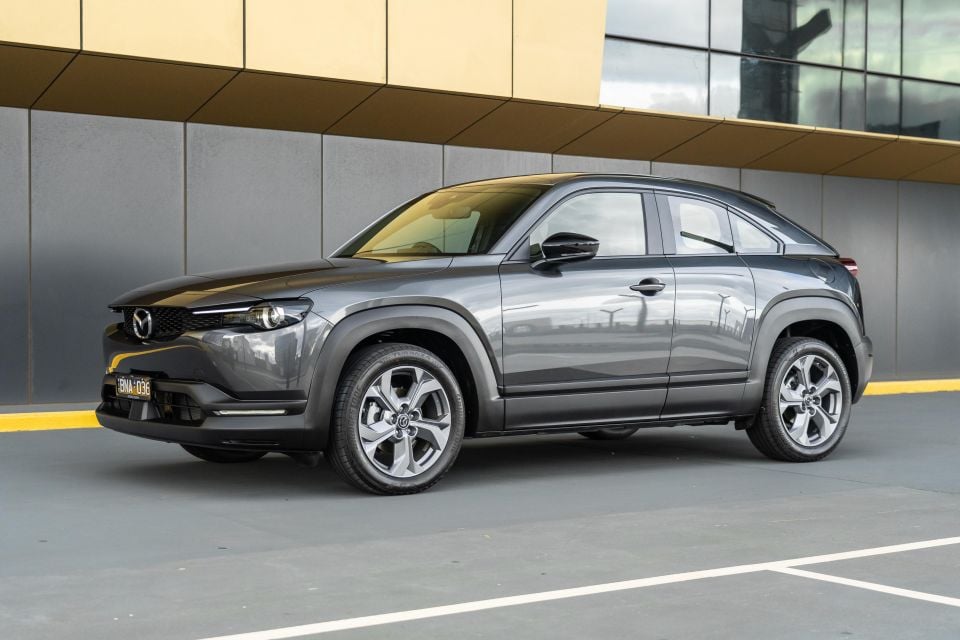
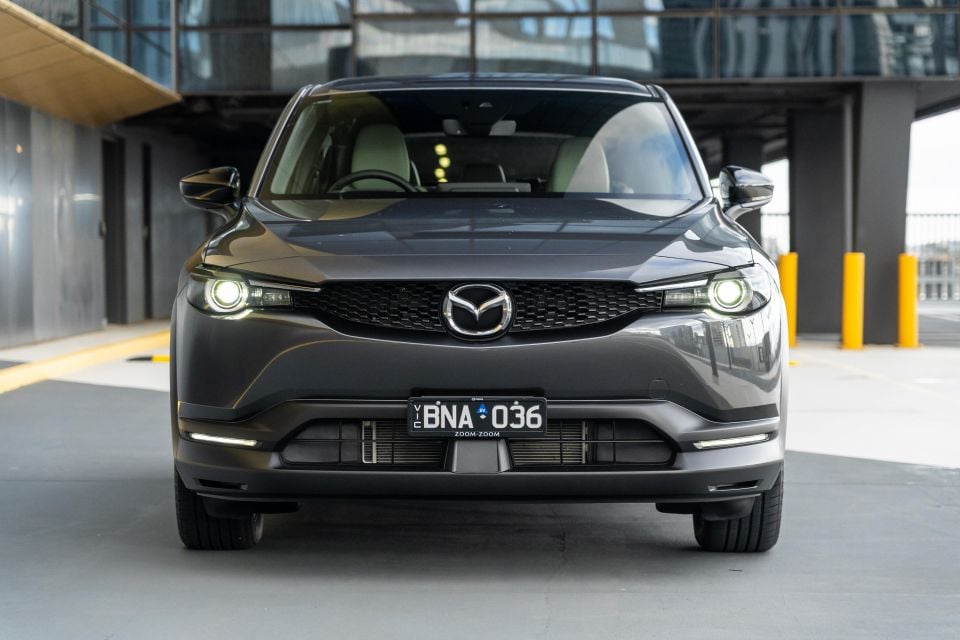
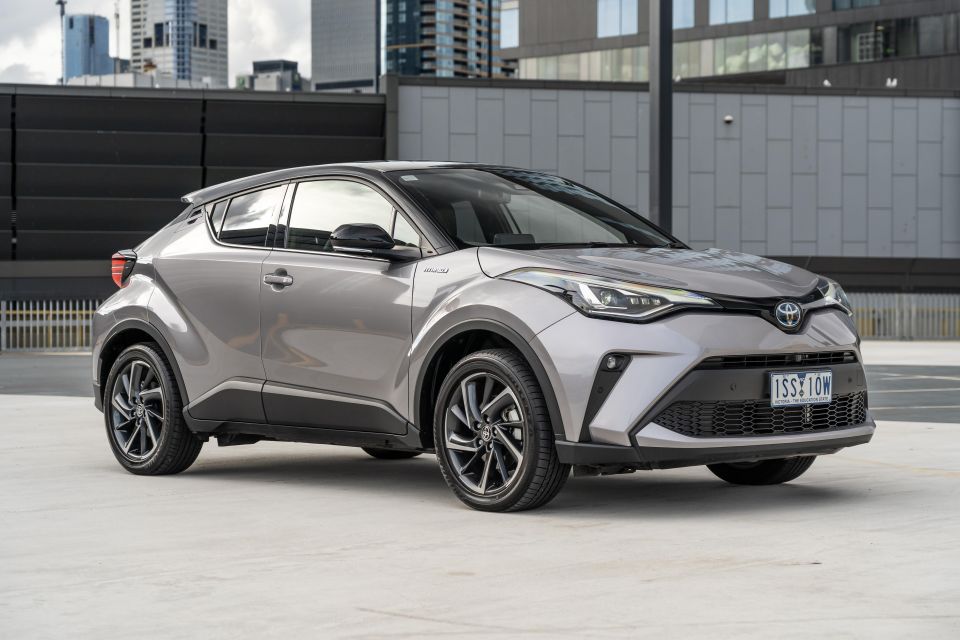
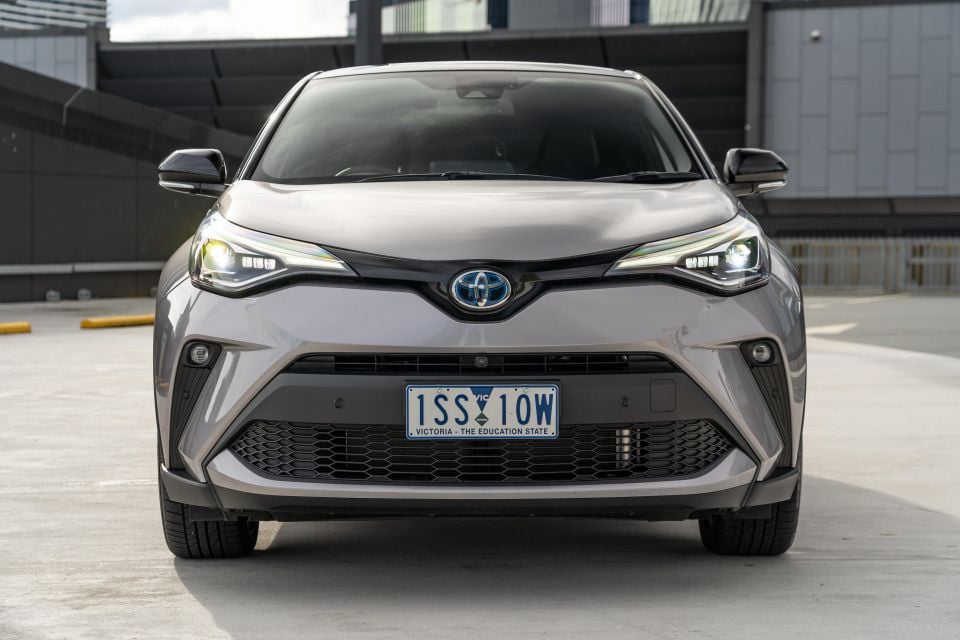
The vehicles tested here:
Among myriad potential competitors, considering this pair defy traditional segmentation, are the Hyundai Kona N-Line ($36,300), Mitsubishi Eclipse Cross Aspire ($34,990), and the Volkswagen T-Roc 110TSI Style ($33,990).
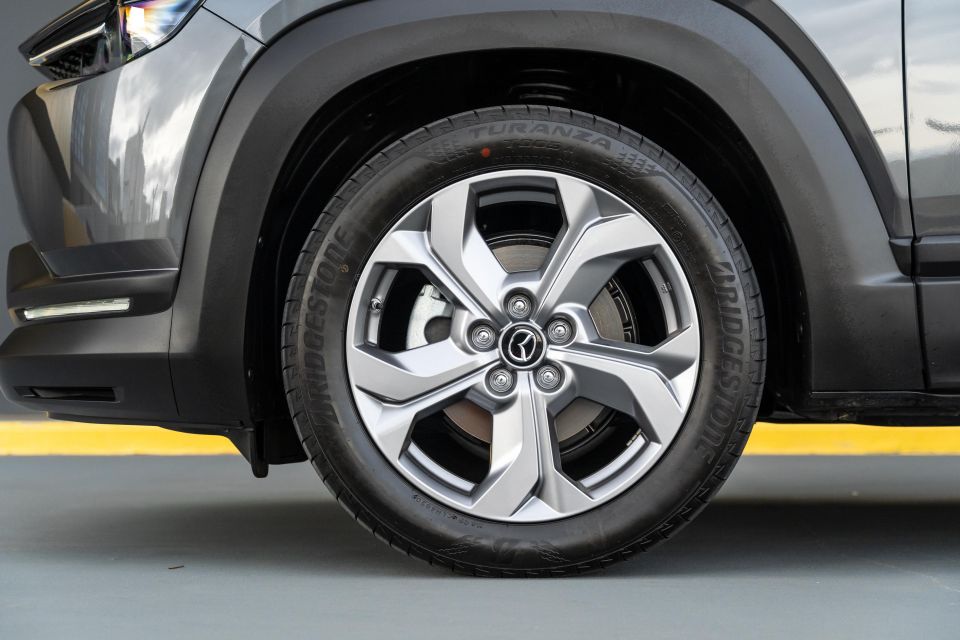
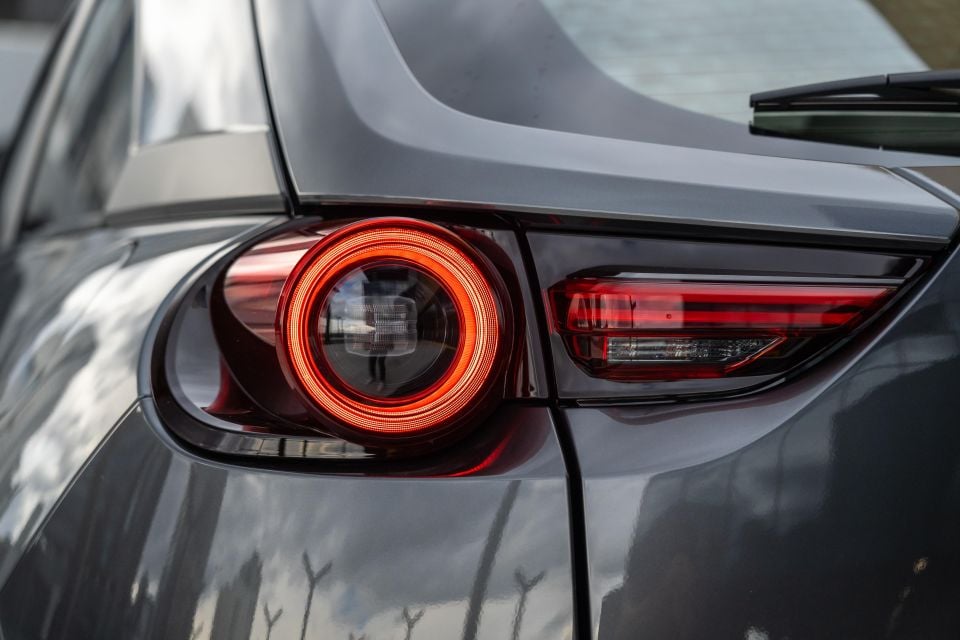

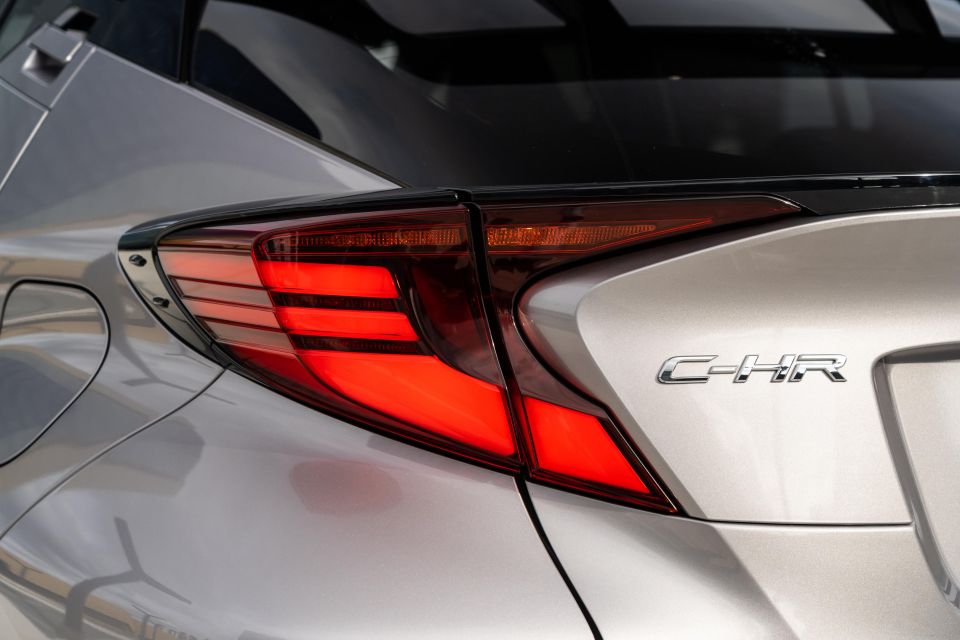
The respective standard equipment lists are as close as the pricetags suggest. The Mazda MX-30 Touring grade and Toyota C-HR Koba each grade have:
The Mazda additionally offers a head-up display and 10-way power-adjustable driver’s seat, whereas the Toyota gets heated front seats and a 360-degree camera.
To get a better idea of the wider model spec walks, read our 2021 Mazda MX-30 price and spec story, and our 2021 Toyota C-HR price and spec story.

Both vehicles get the following safety features as standard:
The Mazda comes standard with a lead vehicle departure alert and front-centre airbag, while the Toyota counters with a 360-degree camera and front sensors.
You can shell out a further $1500 on the Mazda for the Vision Technology Package which adds a 360 camera system, Cruising & Traffic Support, driver monitoring system, front cross-traffic alert, and front sensors.

Both were put through the toughest ANCAP test around – at their respective times of launch.
The Mazda scored the maximum five stars in its 2020 ANCAP test: 93 per cent for adult occupants, 87 per cent for child occupants, 68 per cent for vulnerable road users, and 74 per cent for safety assist features.
It was only the seventh vehicle to be assessed by ANCAP against the more expansive 2020-22 test and rating criteria.
The Toyota also scored the full five stars, in an older 2017 ANCAP test: 87 per cent for adult occupants, 77 per cent for child occupants, 65 per cent for vulnerable road users, and 68 per cent for safety assist features.
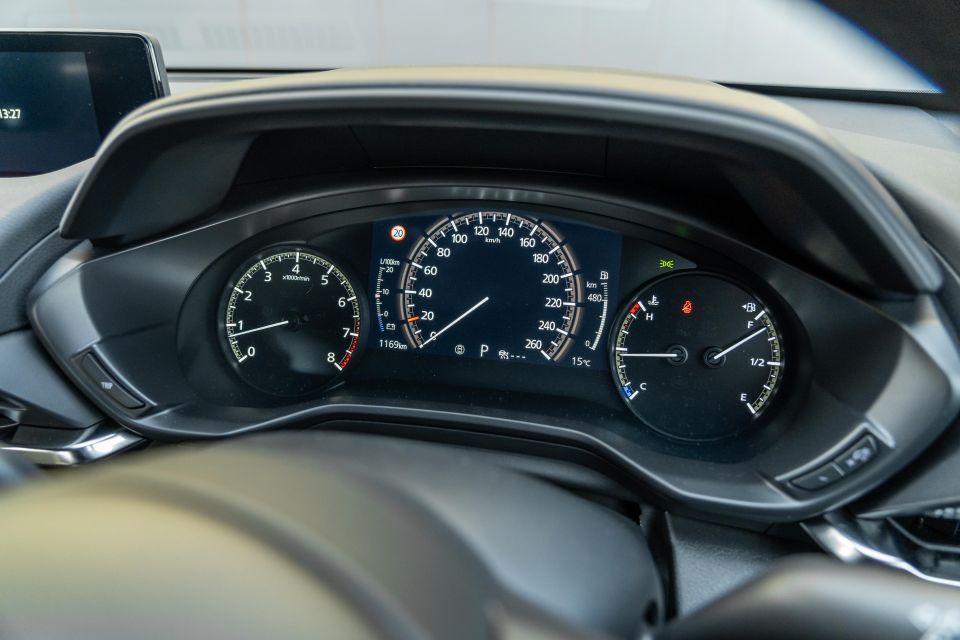
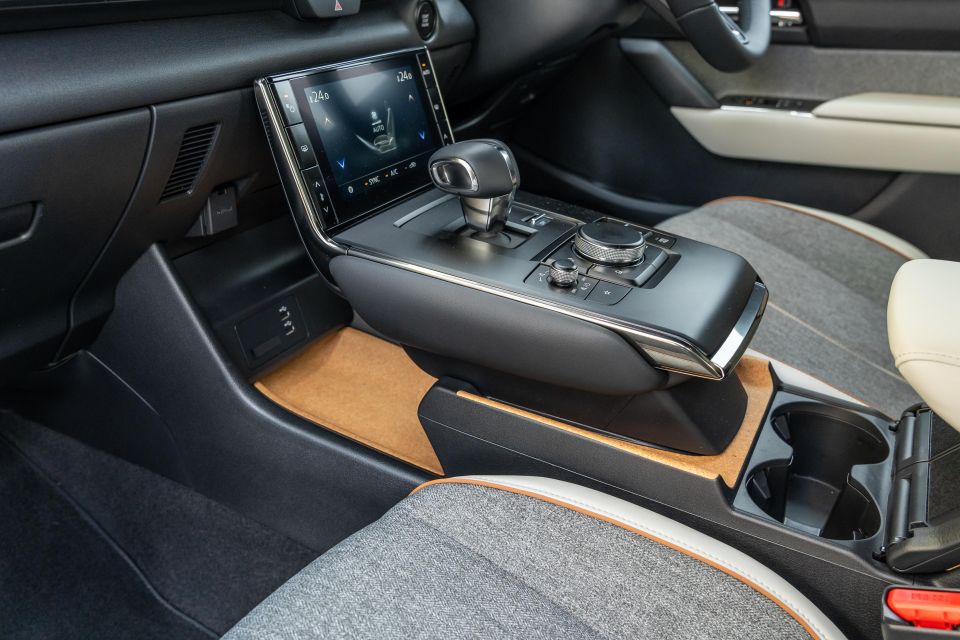
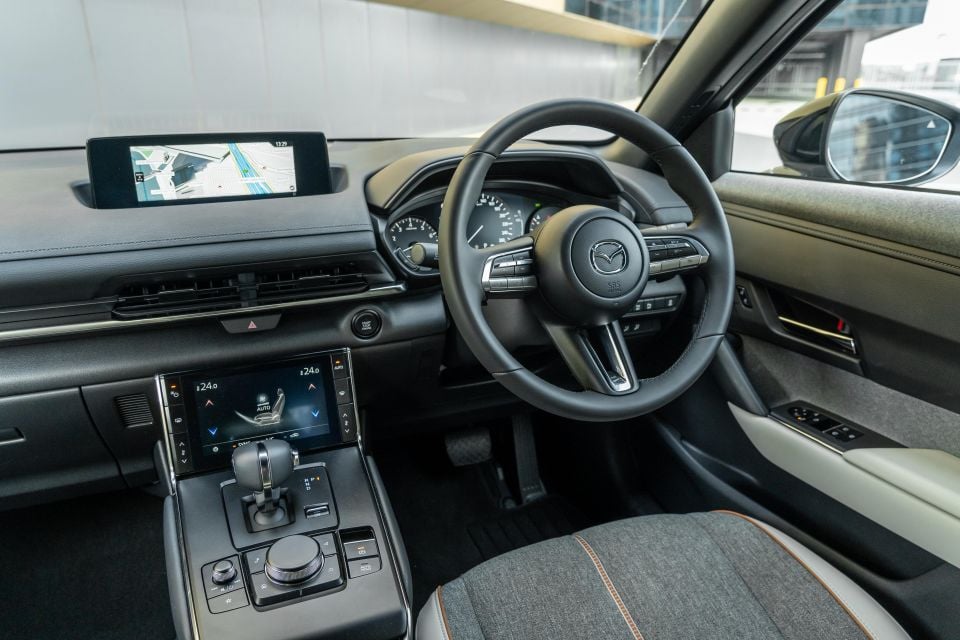
Mazda
The Mazda’s best feature its cabin, which is a real delight with spot-on ergonomics and a nicely elevated driving position. It also has a more expensive feel than the Toyota.
Much is familiar from other Mazdas including the thin-rimmed steering wheel, wide dashtop screen with rotary controller, driver’s instruments with minimalist interface, head-up display, and general switchgear.

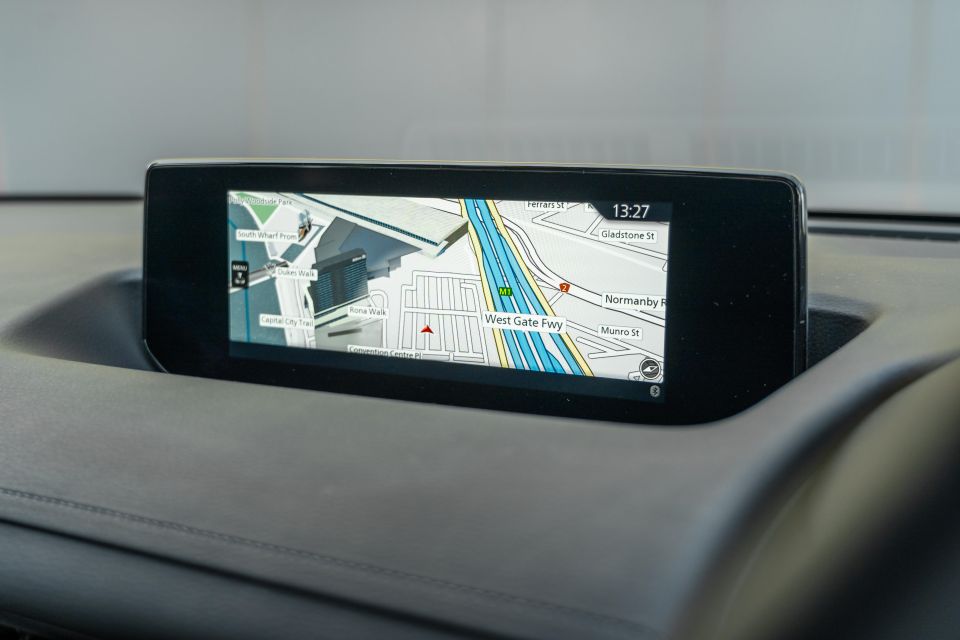
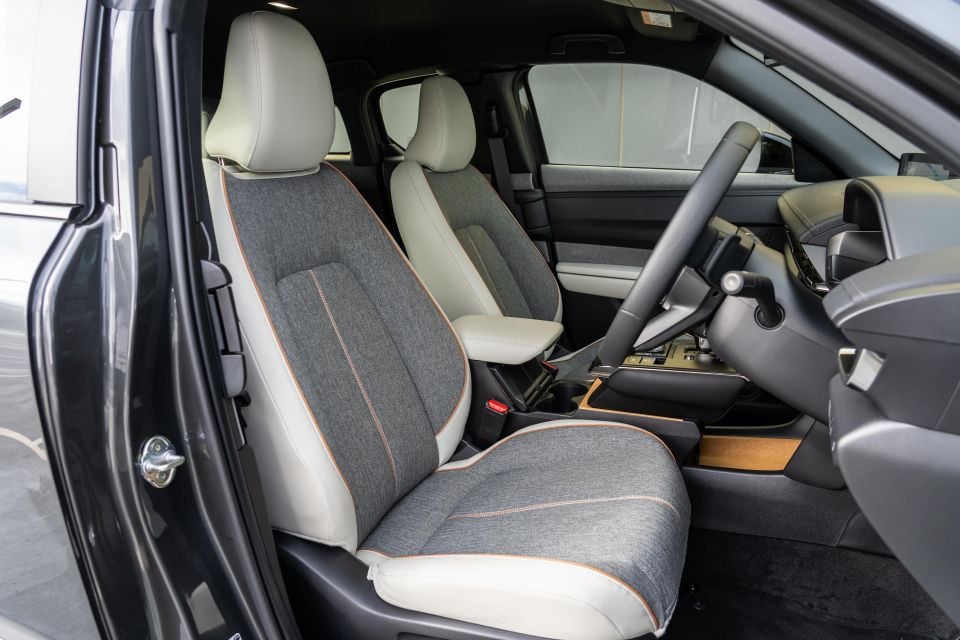
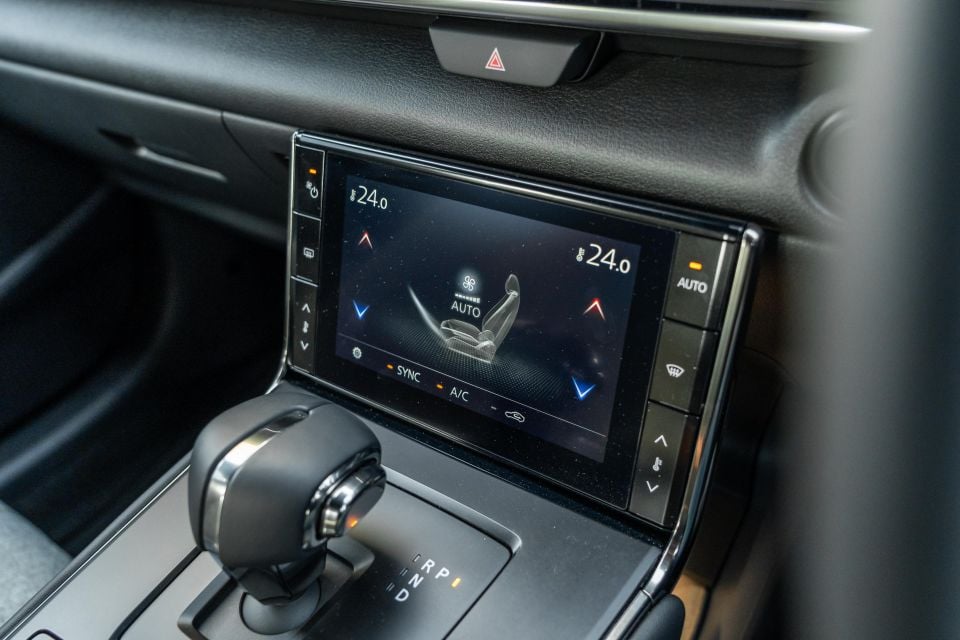
But it also sports some unique features such as a touchscreen to operate the climate control and a shift-by-wire gear knob fitted above a ‘floating’ centre tunnel.
The Touring’s white synthetic leather and grey fabric seats with brown piping look Scandinavian, ditto the light wood inserts which are in fact made from sustainably-sourced cork – a nod to Mazda’s past.
On the subject of green materials, those seats use recycled thread and are not washed in solvents during production, while the fabric-like door trims are made from repurposed PET bottles. It’s a bit BMW i3-like in this regard.
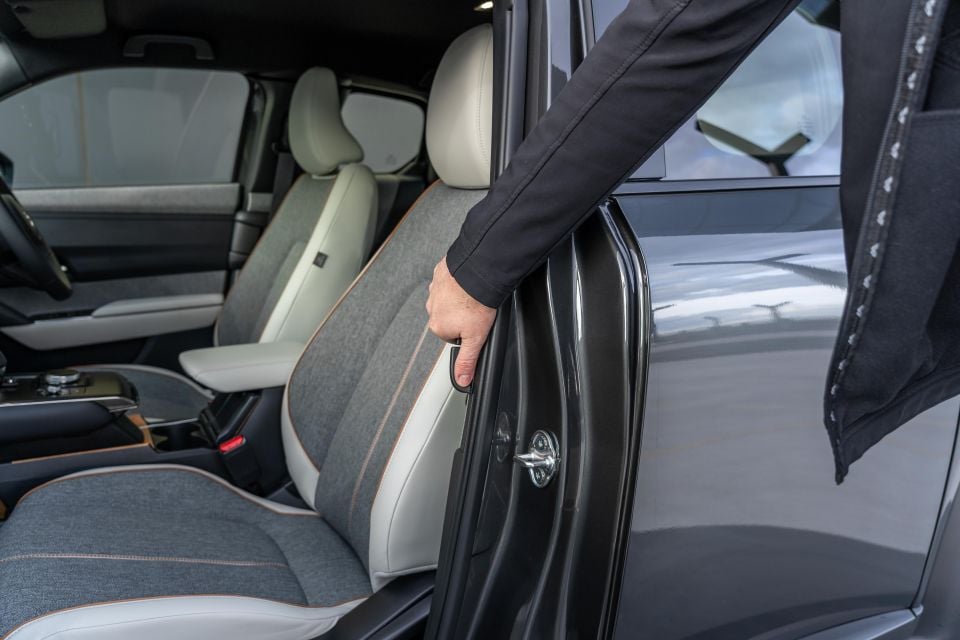
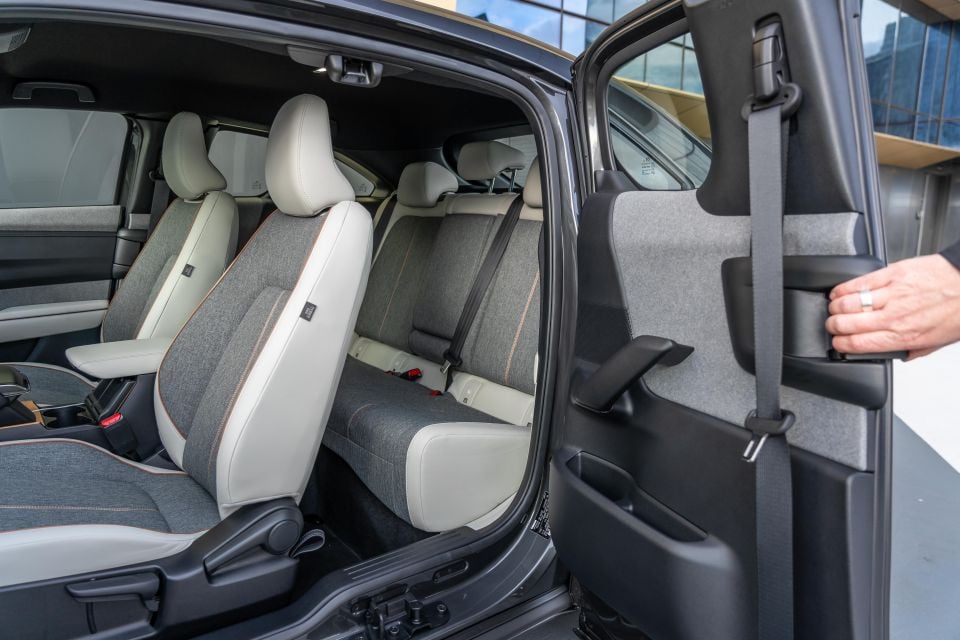

The colour palette is bright and airy, and the tactility of all the knobs and dials first-rate. Plus Mazda’s latest infotainment system is a huge update on its older cars in terms of user interface, processing and graphics.
Storage options include a decent centre console, a hidden section below the gear shifter, and moderate door bins. There are also two cupholders that are covered by rather flimsy cork-and-plastic tabs – a rare blemish.
Entry to the back seats comes with the rear-hinged back doors that can only be opened in sequence after the front ones, by pulling a plastic handle. The lack of a B-pillar creates a striking impression of space and a cool side profile.
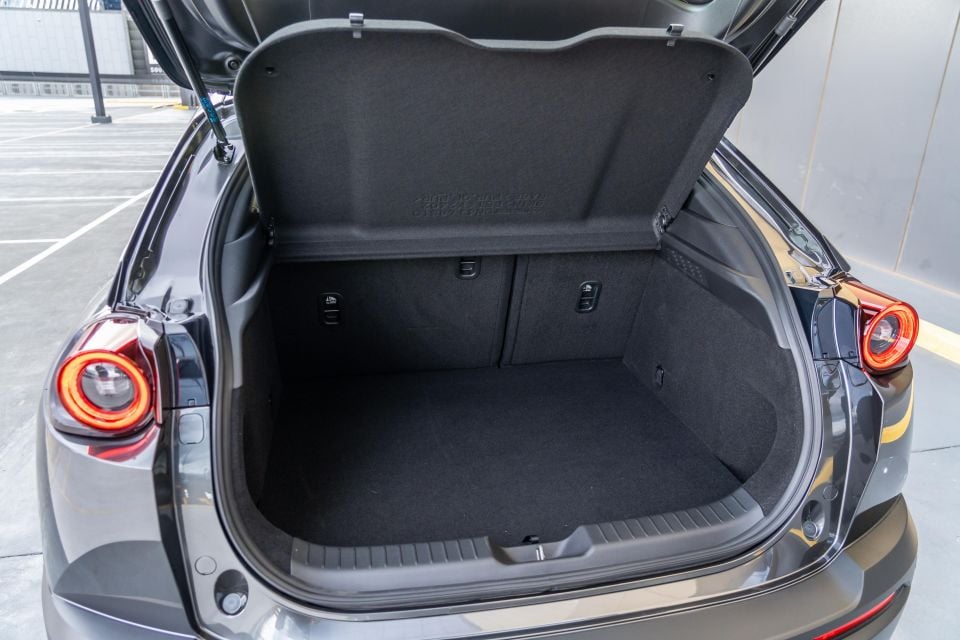
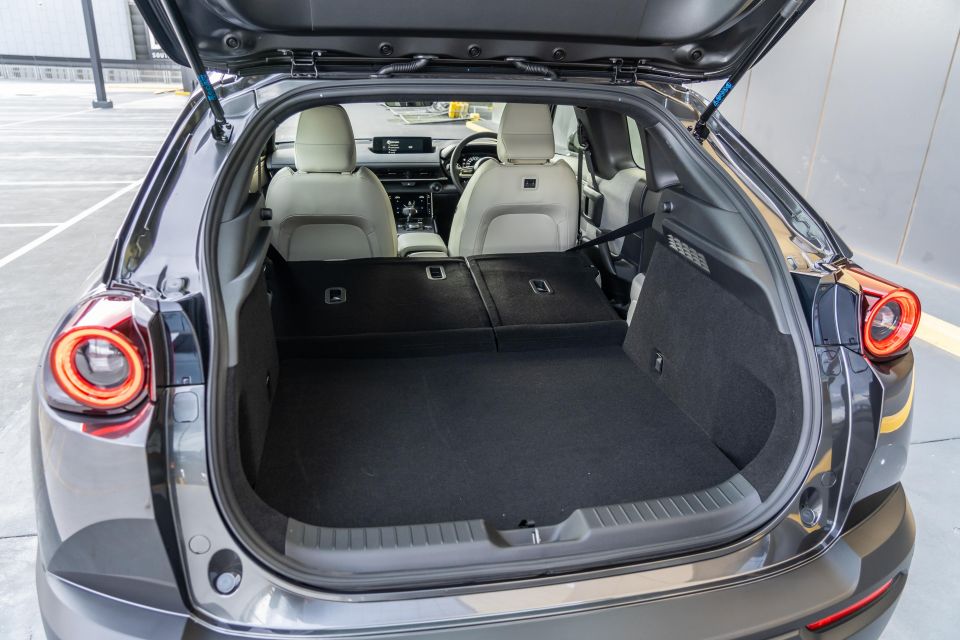
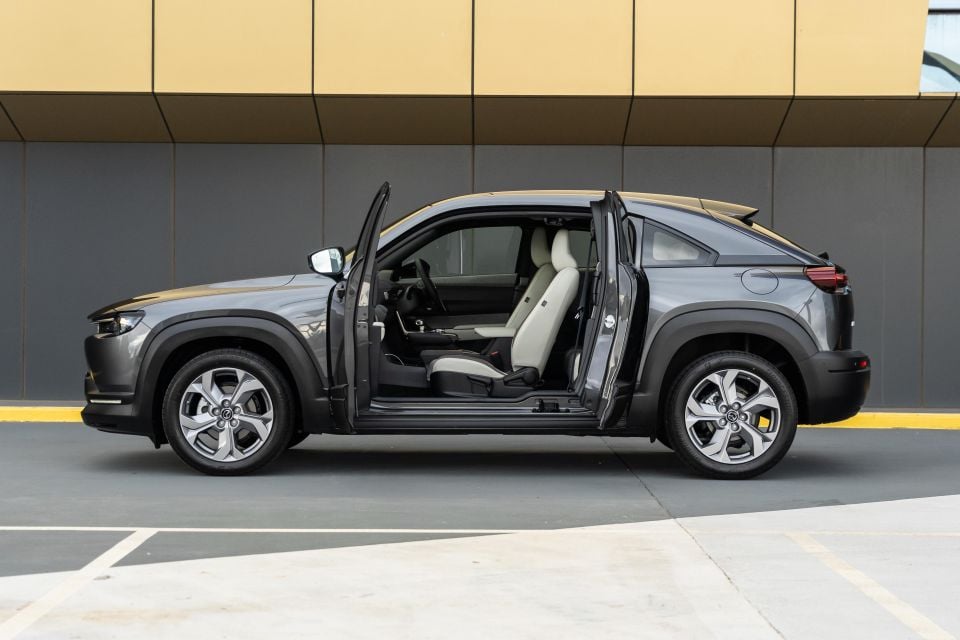
But much like a coupe, the sloping roof reduces headroom and the small side windows hinder outward visibility, and access into the back row past the set-back front seats is much tighter than in a CX-30 with the same dimensions but a more conventional layout.
Even the quite pokey Mazda 3 hatch offers friendlier back access, ditto the C-HR. I’d consider the MX-30 a car for a couple with readily accessibly back-seat storage space.
At 311 litres, the MX-30’s boot space is 7L smaller than the Toyota’s – neither of this pair has as much boot space as a Hyundai i30 hatchback.
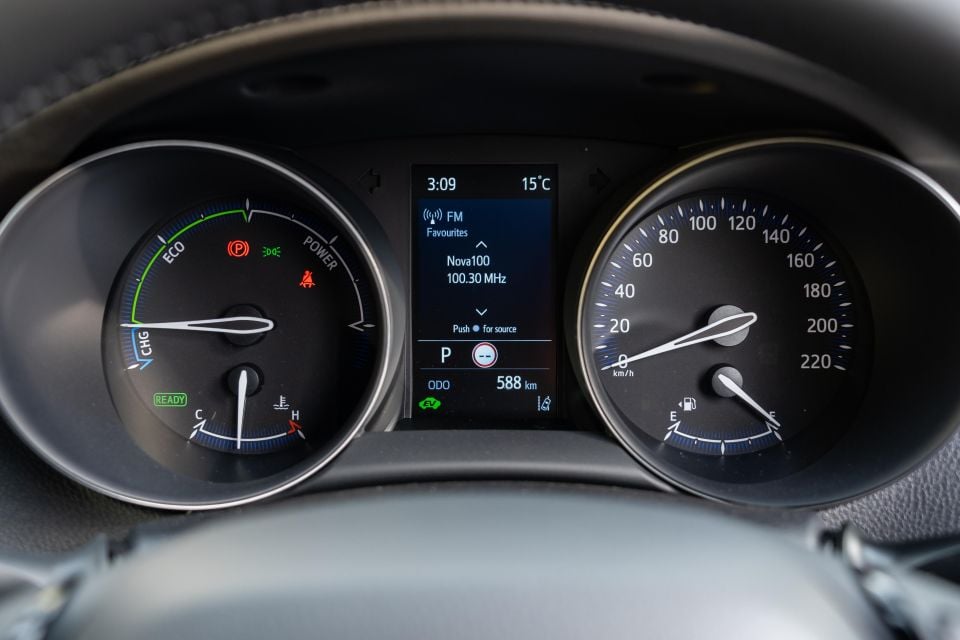
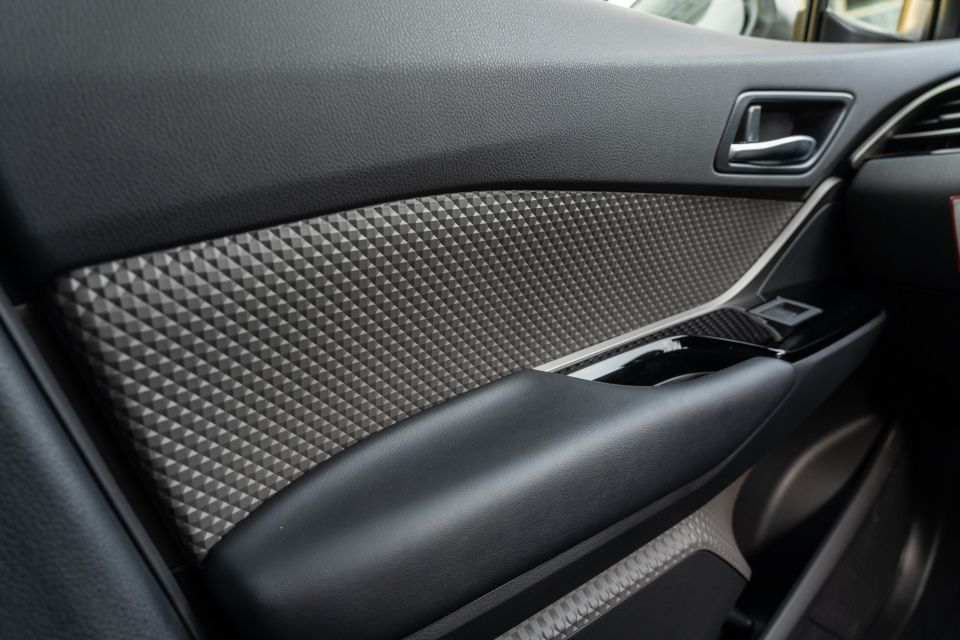
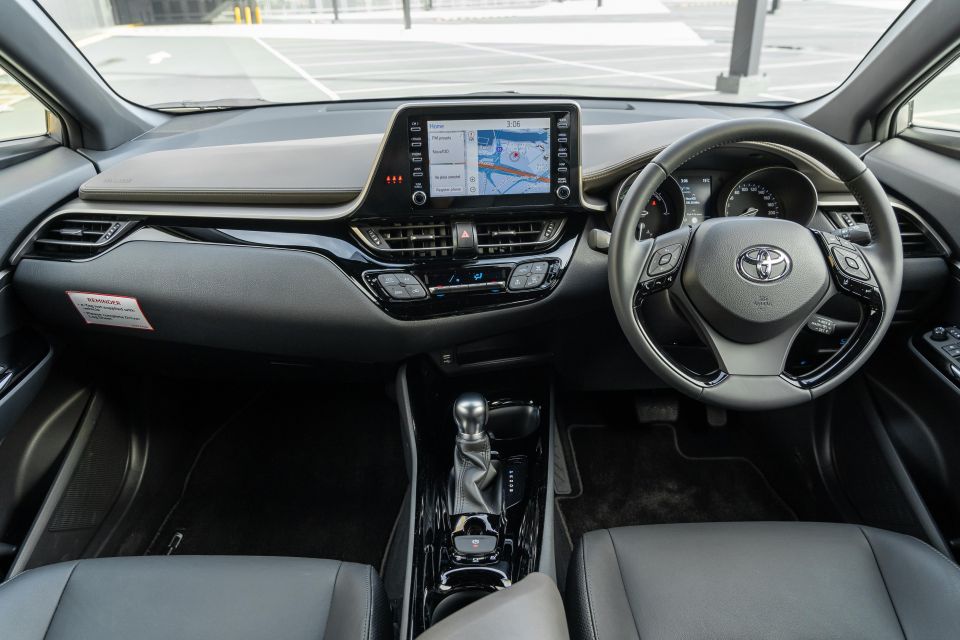
Toyota
While the C-HR’s interior doesn’t quite match the Mazda when it comes to materials and overall quality feel in my opinion – it’s hardly dull, but lacks the Mazda’s standout elements.
The analogue gauges and small sporty steering wheel aren’t as visually exciting as the Mazda’s either, but are super logical, and while there’s no head-up display there’s at least a big digital speed readout in the small TFT screen.
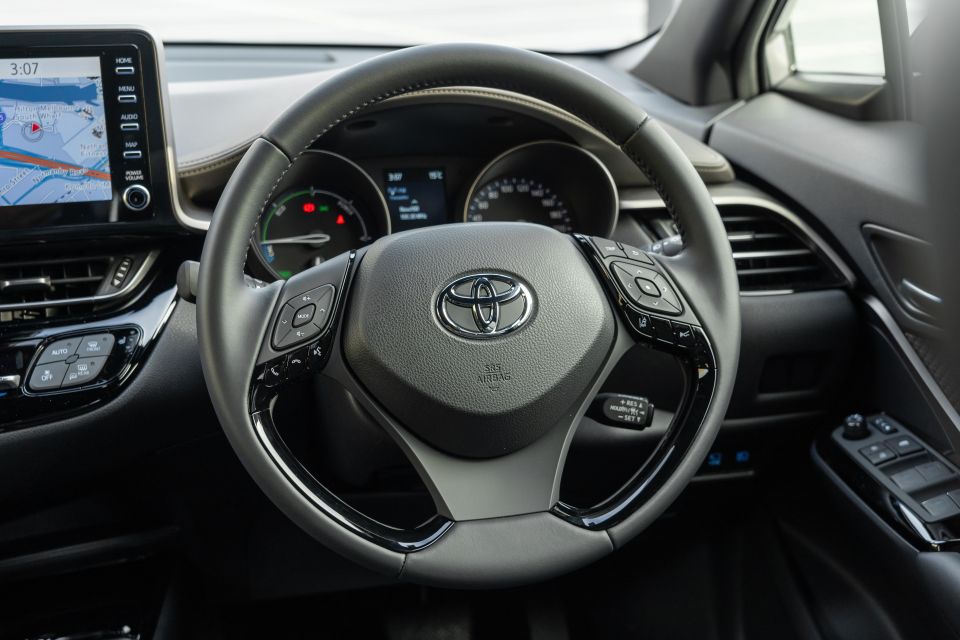
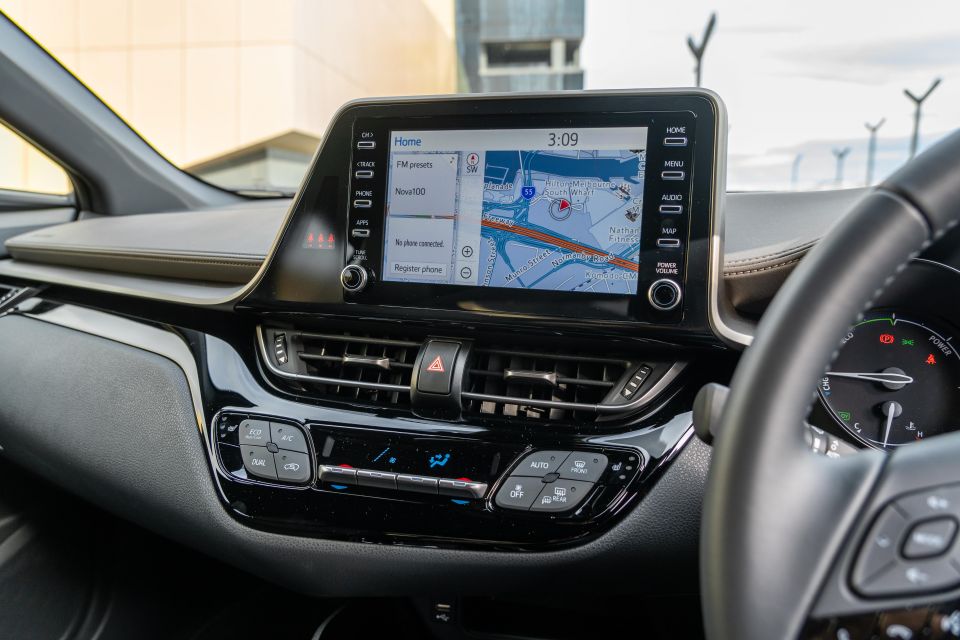
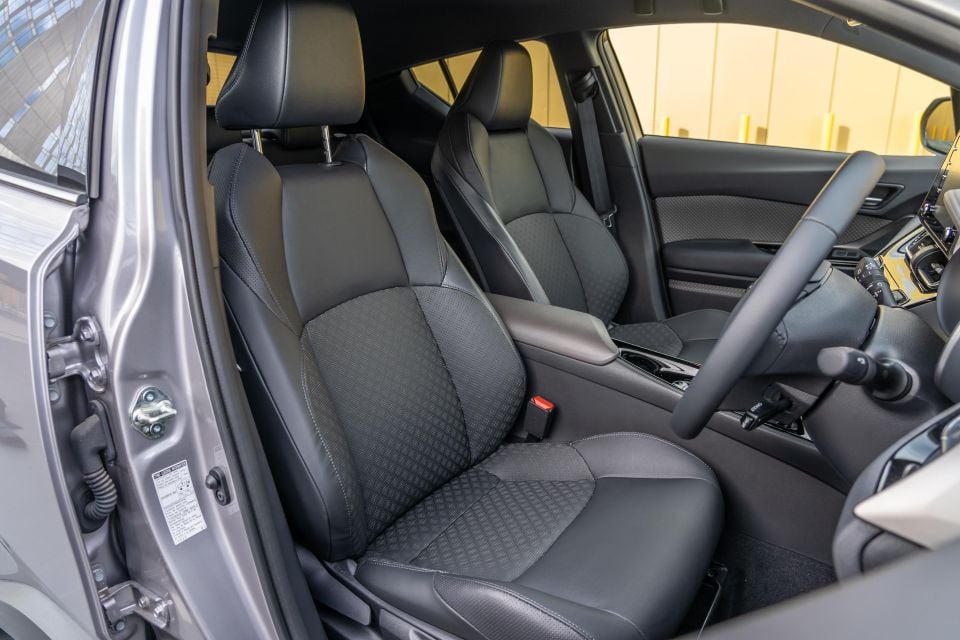
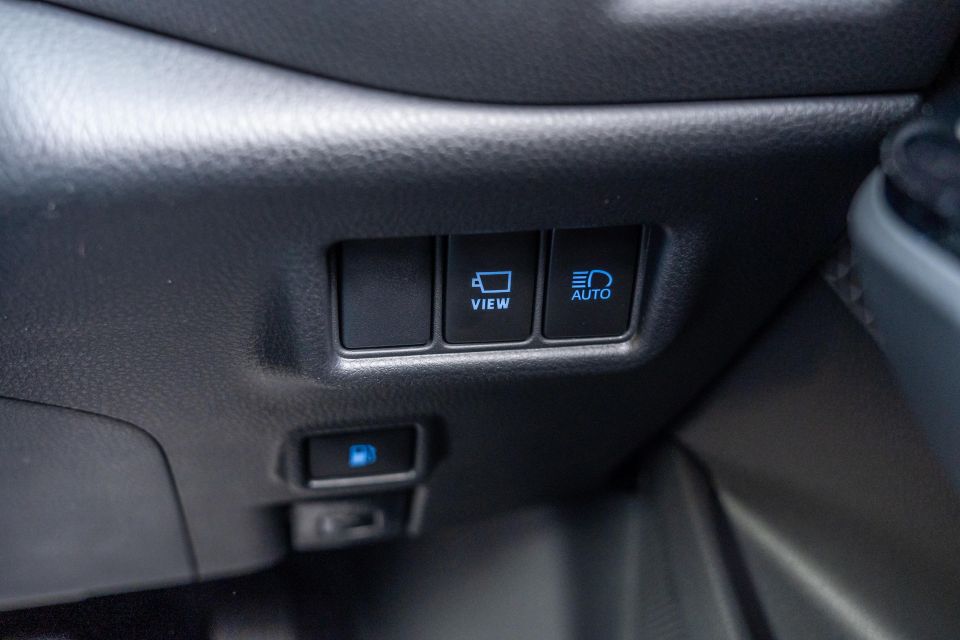
Worth noting for the hybrid is the substitution of an eco dial or power meter in place of a traditional tachometer.
The Toyota’s centre screen is taller and closer to the driver, and runs via touch rather than a rotary dial (the Mazda’s setup isn’t all that intuitive using Apple CarPlay for instance). The climate controls more basic, but simpler.
Design touches such as the diamond door and roof inlays, use of brown padding on the dash and console cover, and subtle use of metallic material like that on the gear knob are all welcome.
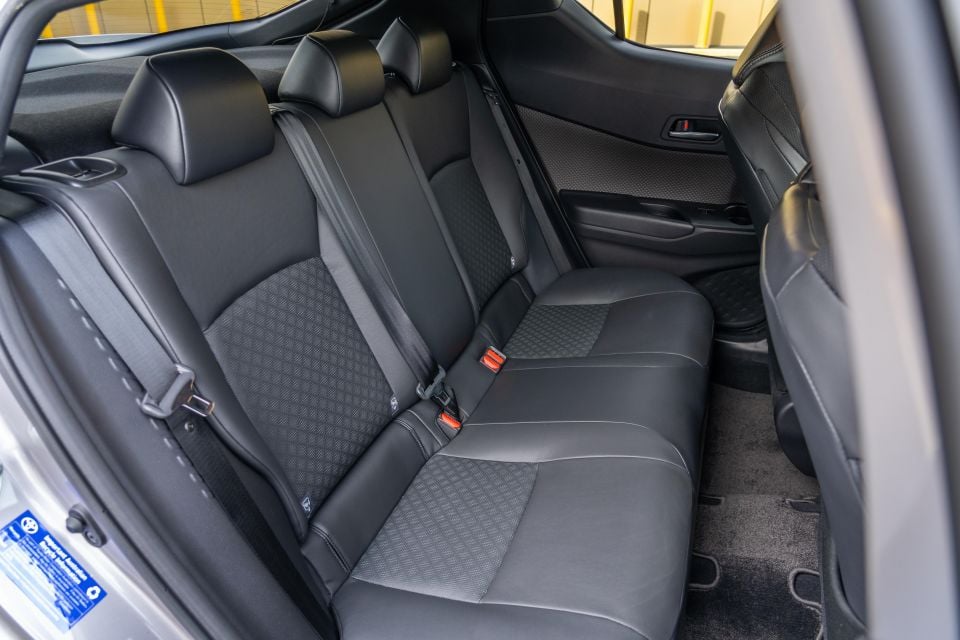
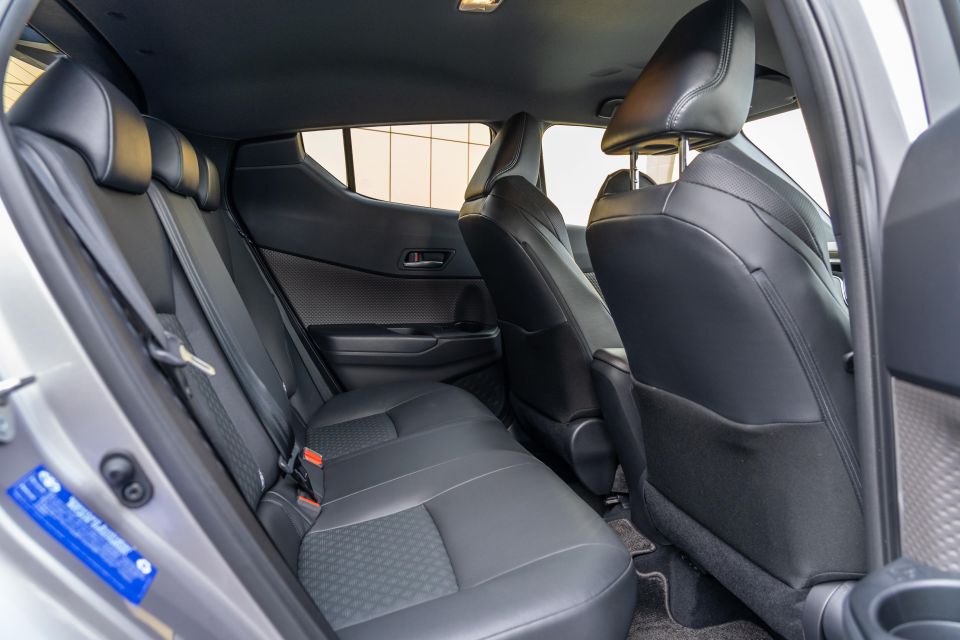
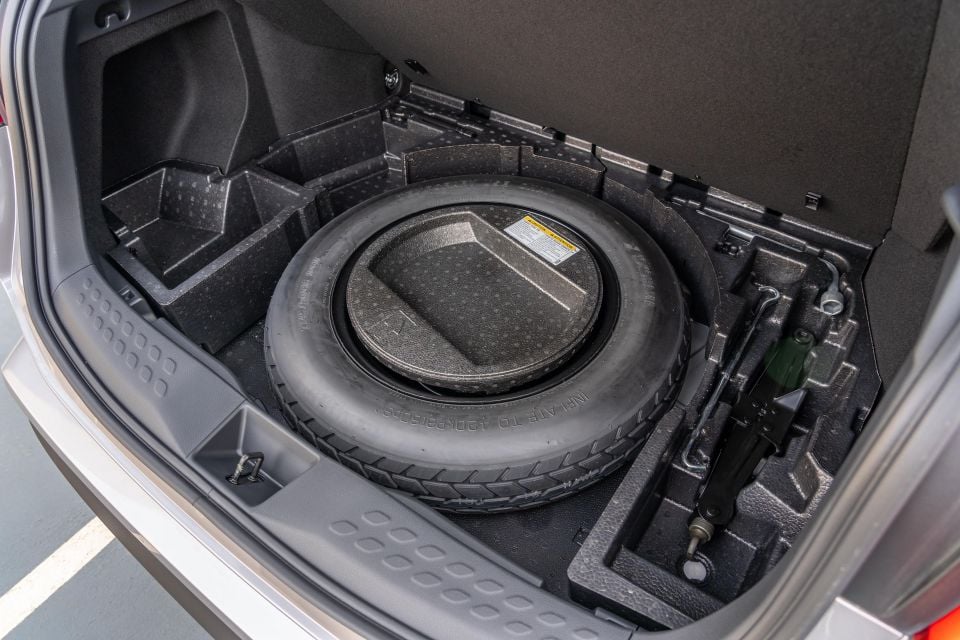
Where expert car reviews meet expert car buying – CarExpert gives you trusted advice, personalised service and real savings on your next new car.
It’s a shame that Toyota over-relies on glossy black surfaces everywhere though. Around the screen, along the dash, and the centre tunnel – all magnets for dust, scratches and sun glare.
Storage options include a decent centre console, glovebox, door bins and open cupholders. There’s no trick floating centre tunnel like in the Mazda, and if you have an oversized smartphone you might wonder exactly where to put it if it’s plugged into the USB point.
In the second row, you’ll find the C-HR isn’t the most family-friendly small crossover on the market. Legroom is on the tighter side if you’re sat behind taller front occupants, and the upswept window line makes outward visibility fairly limited.

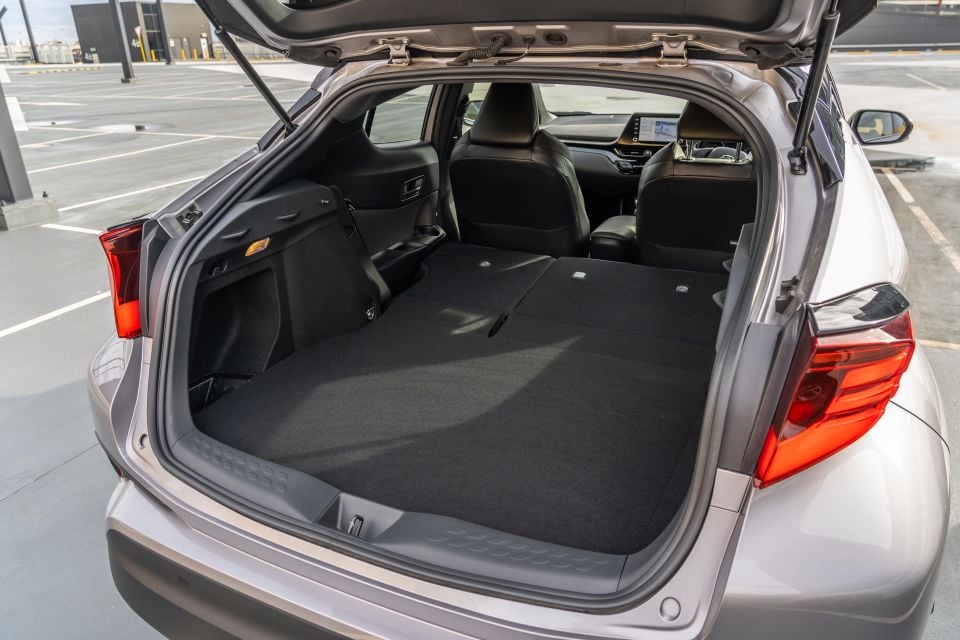
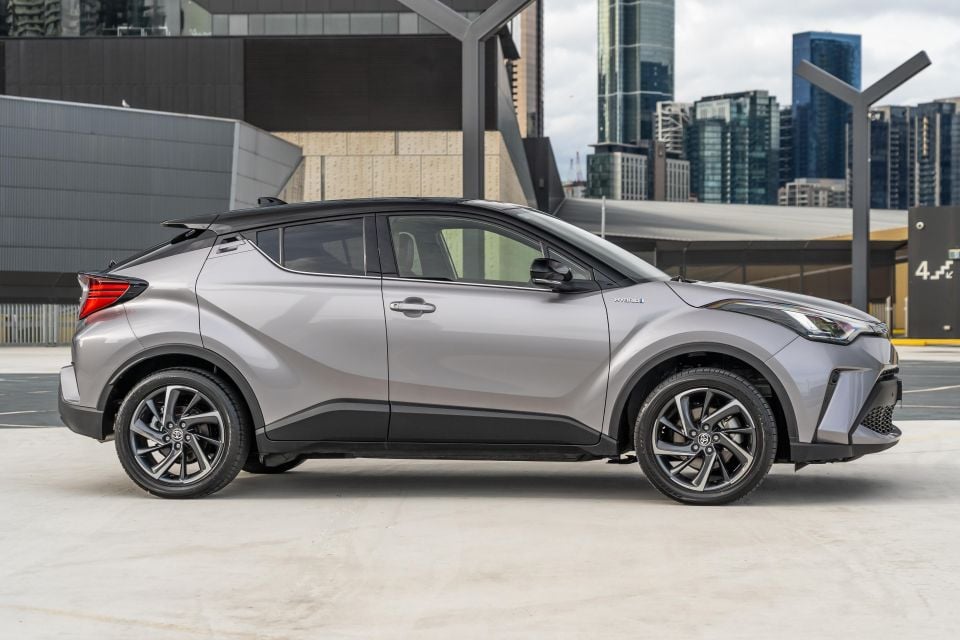
However, both entry/egress and rear-seat space are still better than the coupe-like Mazda MX-30. Neither of this pair are particularly practical, but the C-HR is the least-worst option.
Toyota quotes 318L of boot space with the rear seats in place, which is small by class standards but edges the Mazda by 7L.
There’s a temporary spare under the floor, like in the MX-30, and in both cars the back seats fold fairly flat.
| Mazda MX-30 | Toyota C-HR | |
|---|---|---|
| Length | 4395mm | 4390mm |
| Width | 1795mm | 1795mm |
| Height | 1545mm | 1565mm |
| Wheelbase | 2655mm | 2640mm |
| Clearance | 180mm | 127mm |
| Boot space | 311 litres | 318 litres |
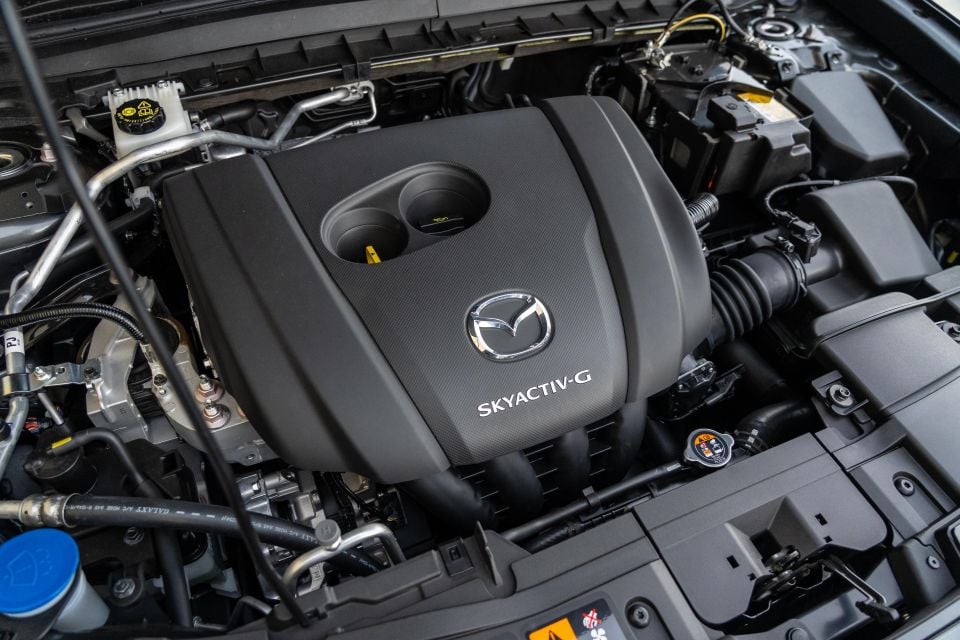
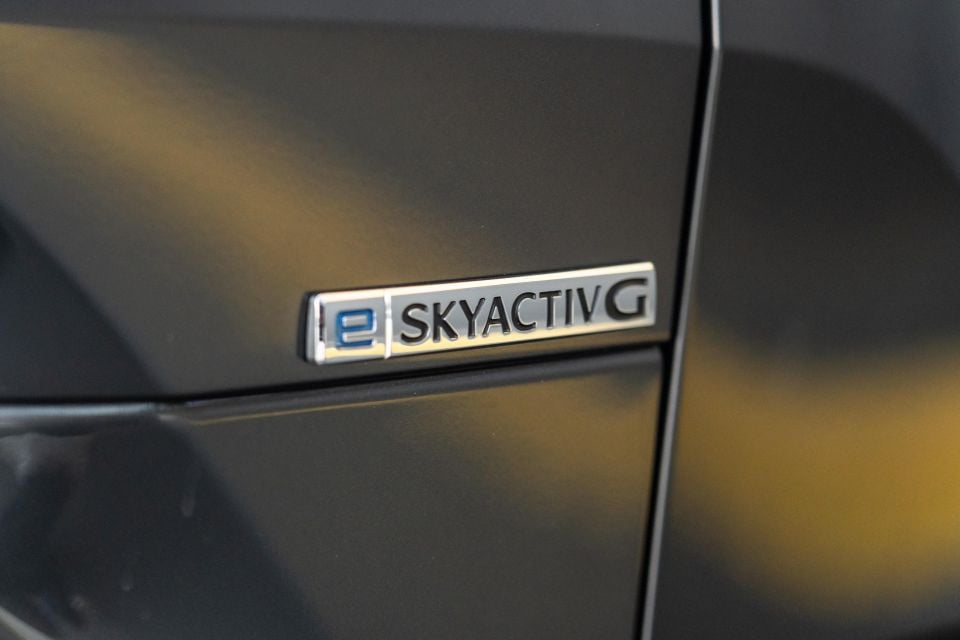
Mazda
The company calls its MX-30 ‘M Hybrid’, but that’s marketing. It’s really just a very slightly more refined combustion engine with smoother idle-stop.
It runs the same 2.0-litre petrol engine making 114kW of power and 200Nm of torque as entry ‘G20’ versions of the Mazda 3 and CX-30.
But the car can also capture energy via regenerative braking or deceleration and store it in a 24V battery, before using it to power some functions while stop/start is engaged.
It is also fitted with a belt-driven integrated starter-generator instead of a standalone starter motor, which turns over the engine more smoothly.
Mazda claims combined-cycle 91 RON or E10-compatible fuel economy of 6.4 litres per 100km. The tank holds 51L.
The engine is mated to a six-speed automatic transmission and is front-wheel drive.
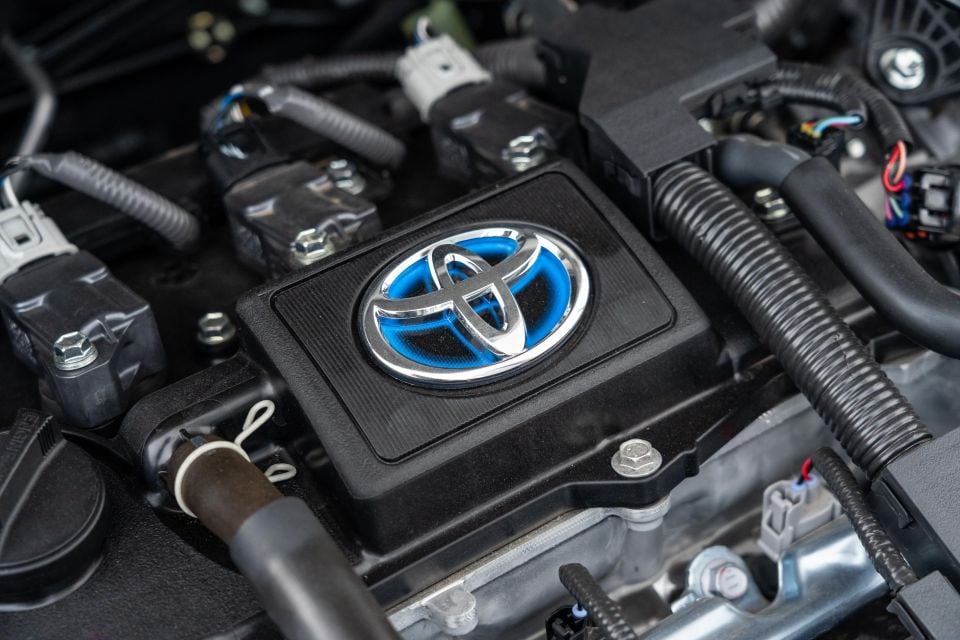
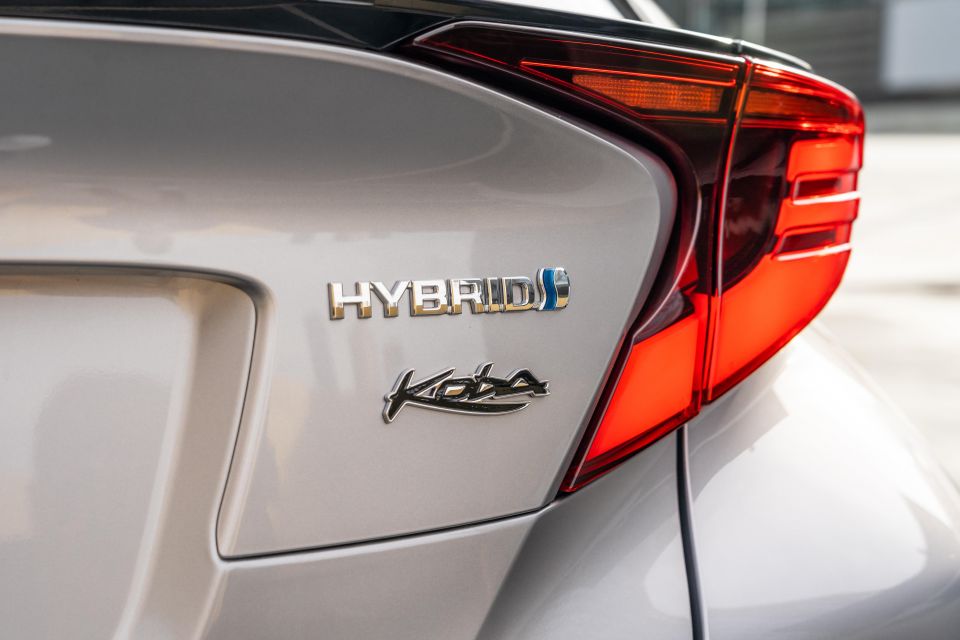
Toyota
Toyota’s more conventional series/parallel hybrid drivetrain gets most of its oomph from a 1.8-litre engine making a pretty modest 72kW and 142Nm.
But unlike in the Mazda it is paired with a (53kW and 163Nm) electric drive motor that does some of the heavy lifting either alone or in tandem.
Toyota cites maximum system power of 90kW. The two propulsion systems don’t operate at their peaks at simultaneous times.
It also has larger capacity battery pack that can store more recuperated energy to partially power this motor, meaning the car often rolls off the line, slows to a halt, and cruises at sustained speeds using electric propulsion.
Toyota claims combined-cycle 91 RON fuel economy of 4.3 litres per 100km, a full one-third superior to the Mazda. The fuel tank stores 43L.
The engine is mated to an e-CVT (continuously variable automatic transmission) and is front-wheel drive.
| Mazda MX-30 | Toyota C-HR | |
|---|---|---|
| System power | 114kW | 90kW |
| Fuel type | 91 RON | 91 RON |
| Fuel economy combined cycle | 6.4L/100km | 4.3L/100km |
| CO2 emissions combined cycle | 150g/km | 97g/km |
| Fuel economy urban cycle | 7.6L/100km | 3.8L/100km |
| Fuel economy highway cycle | 5.7L/100km | 4.6L/100km |
| Expected driving range per tank | 800km | 1000km |
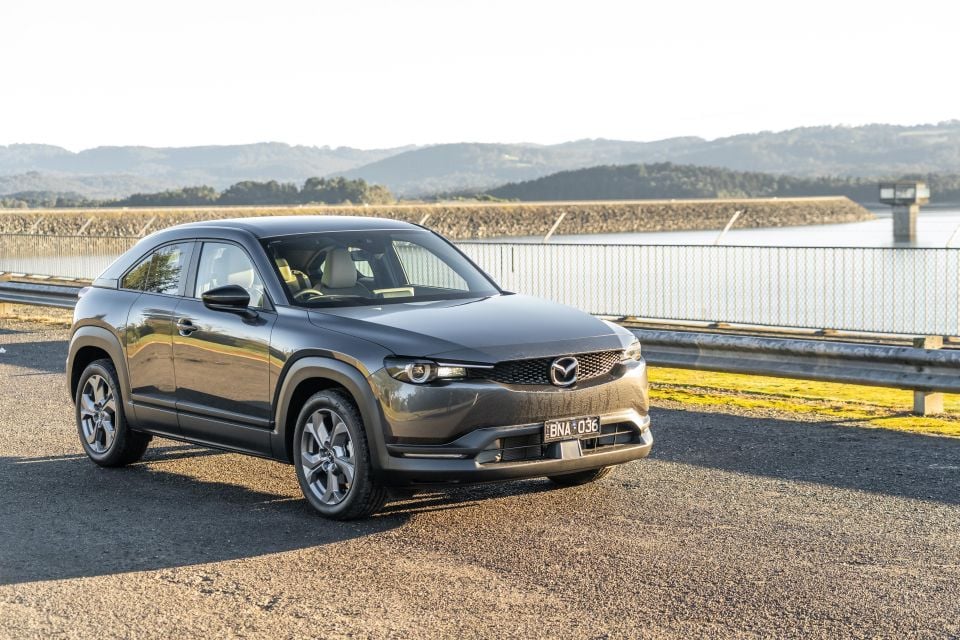
Mazda
The driving position is excellent, with plenty of seat adjustment, a lovely thin-rimmed steering wheel, a HUD to help you keep your eyes on the road, and a slightly more elevated seat.
The engine is a bit disappointing though. Aside from the stop/start kicking in just before you come to halt, it feels like any other 2.0-litre naturally-aspirated petrol engine might.
This means quick throttle response and a willingness to rev to get to the engine’s ideal power and torque band, but not a heap of low-end surge and a pronounced diminishment in refinement when you’re really throttling.
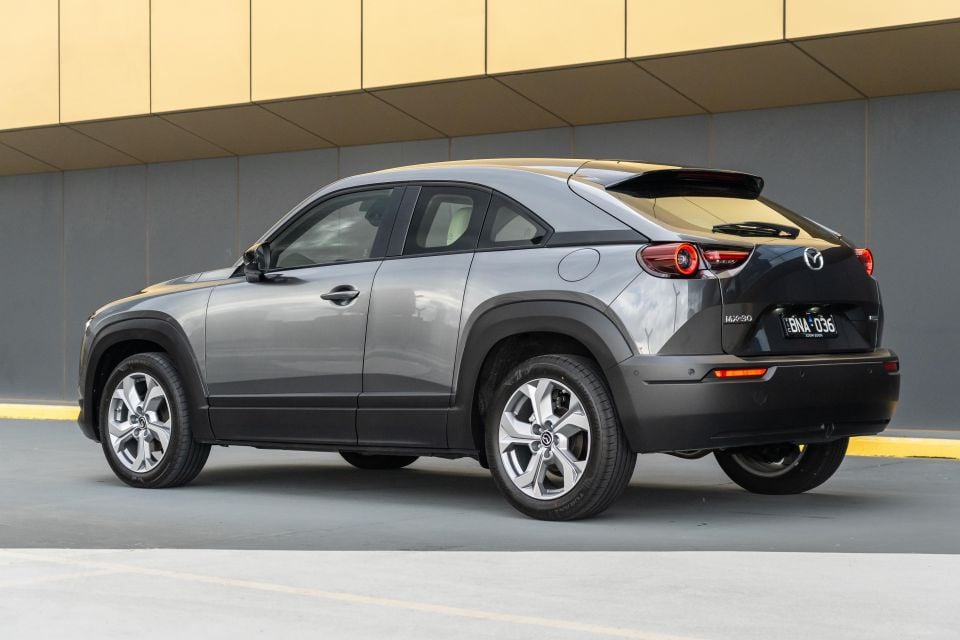
The six-speed automatic is well-calibrated, and the rocker switch-activated Sport mode encourages it to kick down with more aggression and hang onto lower ratios for a bit longer.
I managed a zero to 100km/h sprint time of 10.05 seconds, which is modest. My fuel consumption in the real world on a combined cycle was 7.5L/100km, which is acceptable for an ICE car but nothing to write home about for a ‘hybrid’.
To Mazda’s credit it rides and handles very well, much like the closely related CX-30 and Mazda 3. Mazda’s suspension allows some up and down body movement, but it’s quite natural feeling and engaging, and controlled.
It irons off speed bumps and expansion joints quite well, has light but direct steering, and settles after undulations. Its body control against cornering forces is also encouraging even over lumpy surfaces, despite the rear torsion beam.
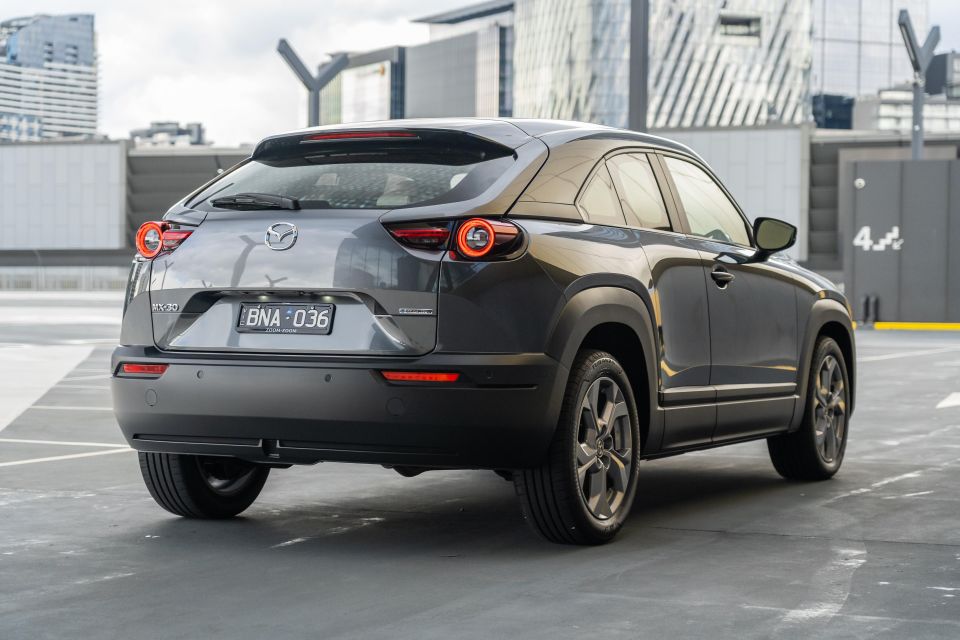
It is also exceptionally refined, with my 67 decibel average over B-roads at 100km/h better than most non-luxury vehicles. The Toyota C-HR on the same strip let in 72dB of tyre and wind noise, for context.
Downsides beyond the uninspiring engine?
Big rear blind spots are never ideal, and the cross-traffic alert with braking is very sensitive: It’s a bit annoying when you’re edging out of a car bay and it keeps beeping and stopping.
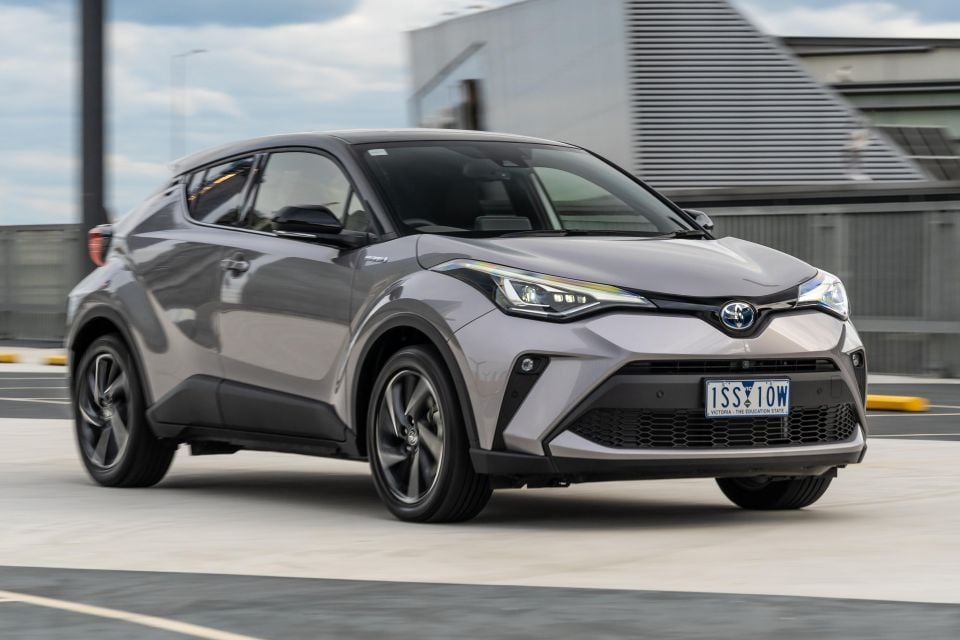
Toyota
Toyota’s hybrid engine is more convincing. The vehicle starts up and usually gets rolling in silence, meaning it’s snappy and refined in typical congestion.
That weedy engine does eventually run out of puff when you’re hard on the throttle, as the 11-second 0-100km/h time shows, though once you’re settled at highway speeds it settles back down nicely.
My real world economy was 4.5L/100km, about matching the claim and easily accounting for the Mazda’s number.
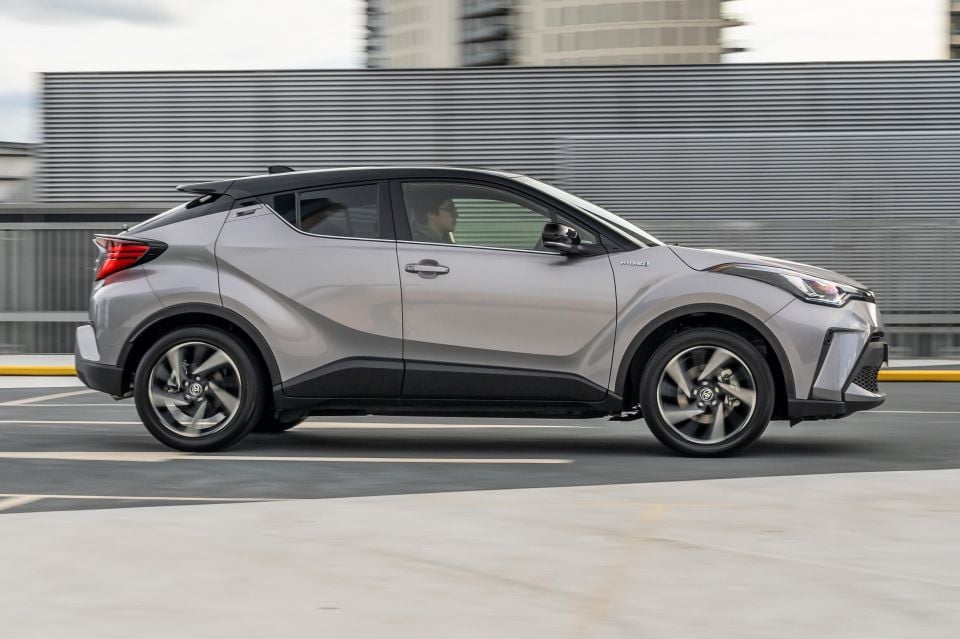
Toyota has also done a good job with the e-CVT, which keeps drivetrain refinement more in check than older hybrid models.
Dynamically the C-HR lives up to the billing (C-HR stands for ‘Coupe-High Rider’) on account of the stiff TNGA platform, and more sophisticated double-wishbone rear suspension.
The motor-driven steering is even lighter and as direct as the Mazda’s, and the agility in terms of attacking corners and rapidly changing direction is also noteworthy. Ditto the ride comfort over sharp hits, let down only by some NVH intrusion.
Toyota’s hybrid braking is also pretty well sorted these days, with the regenerative system’s pedal feel much more normalised and progressive than earlier iterations.
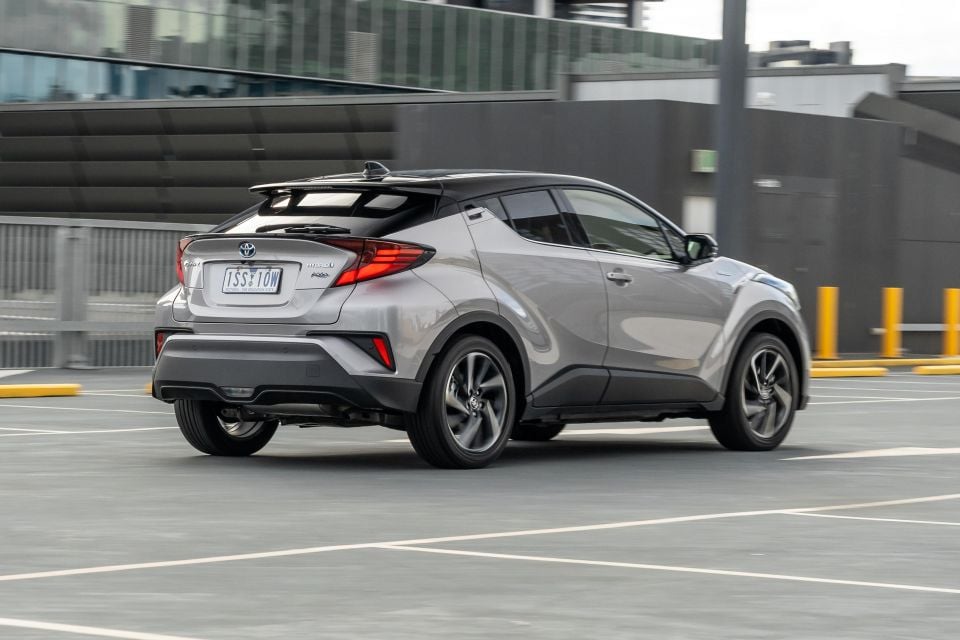
On a side note if you want a sportier or sharper feel, the C-HR GR Sport Hybrid should serve you better with bigger wheels wrapped in lower-profile tyres, as well as retuned steering and suspension with a more athletic bent.
Toyota’s driver assistance systems are some of the better technologies of their type, including Lane Tracing Assist (lane centring) that proved more confidence-inspiring than Mazda’s slightly more reactive system.
As with the Mazda, outward visibility is not a priority over design, and the downside of small side windows and a huge C-pillar is that it’s a hard vehicle to see out of without being impaired by blind spots – technology notwithstanding.
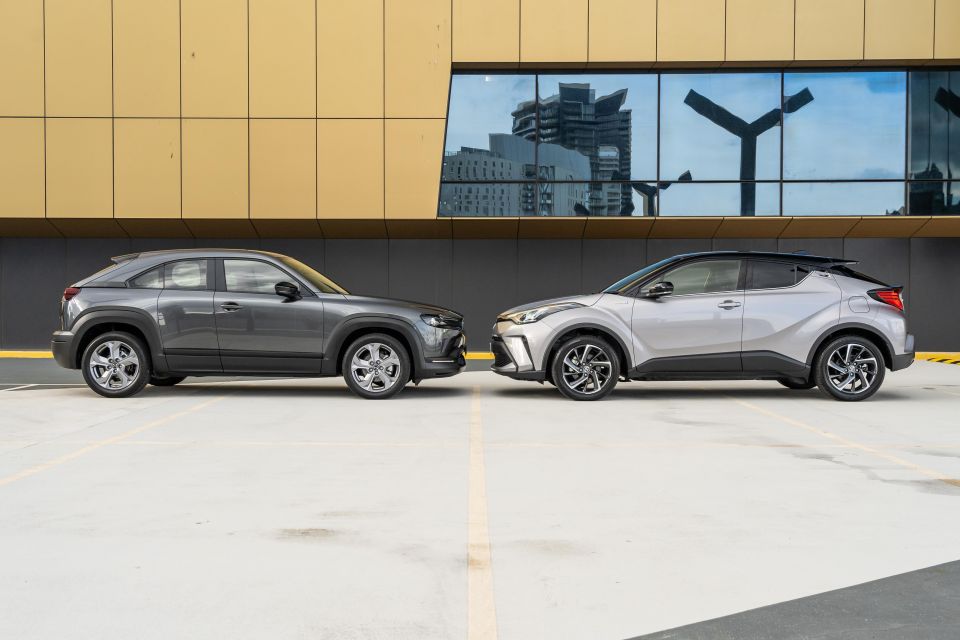
Both Mazda and Toyota provide standard warranties for five years with no kilometre limit.
The Mazda must be serviced every 12 months of 10,000km at interval costs of $316, $361, $316, $361, and $316. However there are extra charges included over this period such as new air filters and brake fluid replacement.
The Toyota has more convenient 12 month or 15,000km intervals, each of which is capped at $220. So not only does it use less fuel than the Mazda, it’s also cheaper to keep maintained.
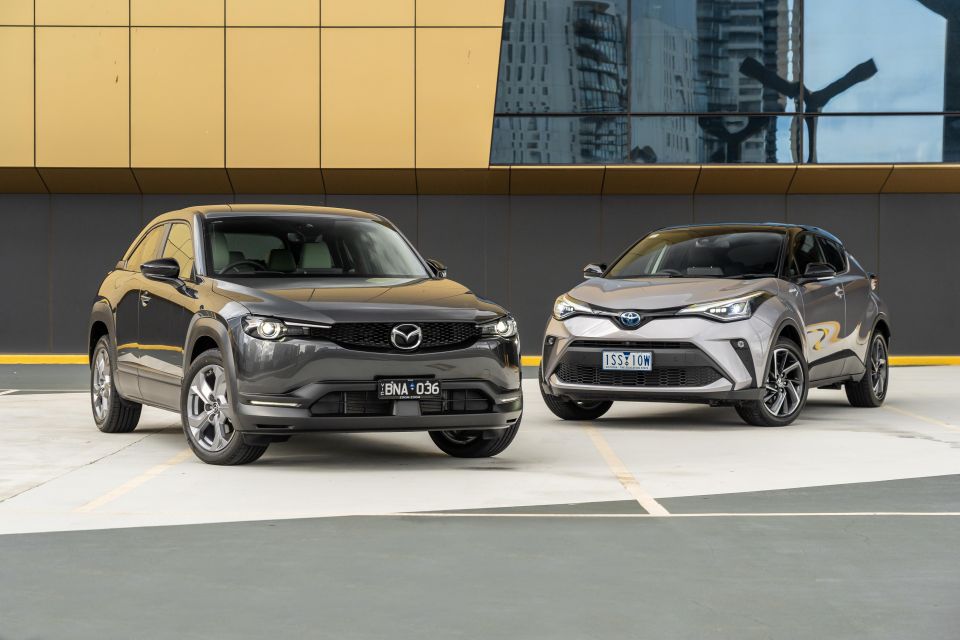
Both vehicles require compromises and stand out in different ways.
The Mazda has a more premium interior, greater highway refinement, a bit more engine punch under heavy throttle, and super-cool suicide doors.
Meanwhile the Toyota offers more useable rear seats (though it’s still not all that spacious), superior fuel economy, cheaper servicing costs, and more sophisticated suspension that imparts a more agile demeanour.
Both of these vehicles are heart-over-head. Me personally, I’d edge toward the Mazda on account of its uniqueness. But over our various ratings categories it’s actually the Toyota that takes the win.
MORE: Everything Mazda MX-30 MORE: Everything Toyota C-HR
Share your thoughts with us in the comments below!
Share your thoughts and write a review of a car you own and get featured on CarExpert.


Max Davies
4 Hours Ago


Damion Smy
13 Hours Ago
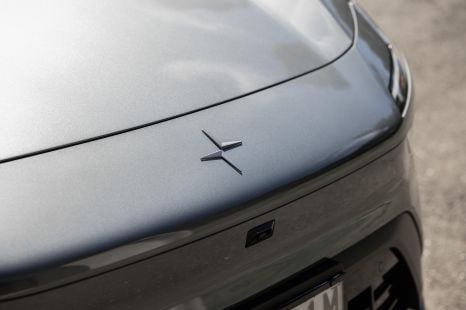

Damion Smy
13 Hours Ago


Damion Smy
15 Hours Ago


Damion Smy
17 Hours Ago


CarExpert.com.au
19 Hours Ago